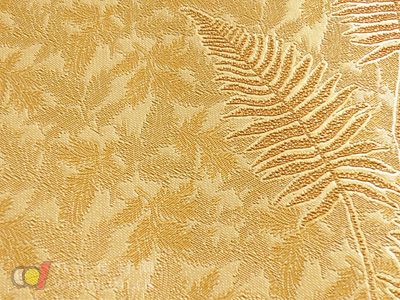What are the installation process of soft wallpaper?
Soft wallpaper installation process: The construction process of wallpaper installation should be: wall inspection, grassroots treatment, inspection of wallpaper, painting base film, measuring wall surface, cutting wallpaper, blending glue, glue on paper, pasting wallpaper, checking and cleaning. First make sure you do the right thing and then do things right, which is why the construction process is important. First, the wall requirements: The ideal wallpaper construction surface should be dry, flat, clean, load-bearing, water-absorbent and pH-neutral. This step is essential for rooms that do not meet the requirements for basic treatment, especially for secondary renovations. Second, construction - tools: Preservation of construction tools: When the tools are used up, they should be cleaned and stored properly after drying. Construction tools: hard and soft scraper, stepladder, plumb line, rubber mixing barrel, cutting guide ruler, white towel, rubberized brush, tape measure, flat brush, wallpaper knife, hair roller brush, cleaning shovel, positive angle roll, Ruler and pencil, angled pressure roller, rubberized table. Third, cut the wallpaper: For the wallpaper to be paved, the owner should be able to check it himself. If it is not the same batch of products, there will be color difference; use the glue machine, the glue amount is even; pay attention when laying the decals, the flowers should be from the middle From the position where the line of sight is flat, the best effect is guaranteed; the position of the wall is laid from the middle. Prepare a platform equivalent to the length of the cut and place clean paper on the platform for use in cutting and brushing. Wallpaper box: Make sure the wallpaper model is correct and the same as a batch number, arranged in order of volume number. After unpacking, look up the construction instructions and see if there are any adjustments to the head and direct horizontal flowers, misplaced flowers, and any flowers. Pattern direction: First determine the direction of the pattern, distinguish between the top and bottom. Measuring the height of the wall: Take the top of the foot line as the starting point and measure the height of the wall with a steel tape measure. Length of paper cutting: It should be cut according to the height of the wall and the requirements of the parquet. Generally, it is 10cm longer than the actual height, so that it can be modified up and down. The wallpaper with obvious mosaic pattern needs to be spliced ​​and posted, preferably when cutting. After the parquet is cut, the stitching marks are marked on the back of the paper in the direction, order and landscape. If the unit of the pattern is large, be sure to leave a unit length of the pattern when cutting. Cut according to the box number and volume number of the product. Fourth, adjust the glue and brush: Please have a professional construction team with construction experience or a construction team with decorative qualifications. Please choose high-quality professional wallpaper glue powder, carefully read the instruction manual of the rubber powder, and mix the glue. Mixing glue: When blending the glue, first pour the specified amount of cold water into the bucket, slowly add the wallpaper rubber powder, mix well in the same direction, do not agglomerate, and adjust it after 20 minutes. Glue viscosity: Insert a bamboo chopstick into the glue vertically. If the chopsticks do not fall, the viscosity is considered to be suitable. Use of glue: Non-woven paper-based products will be directly applied to the wall surface. Other wallpaper glue should be evenly brushed on the surface of the wallpaper. If there are conditions, you can use the glue machine to apply glue. Let the wallpaper fold and press on both sides. Allow the glue to fully penetrate the base paper before construction to achieve the purpose of fully softening the base paper. Generally, it takes about 3-10 minutes, and the dipping time of all wallpapers must be the same. The thickness of the base paper is different from the gram weight, and the softening time is also different. The thicker the base paper, the longer the softening time. Five, wallpaper paste: 1. Determine the position of the first wallpaper. Generally, start construction from the corner of the wall and draw a vertical line on the wall (about the width of a wallpaper from the wall). Do not construct more than two places in the same room at the same time. 2. After attaching the wallpaper to the wall, use the special pressure roller for the wallpaper to roll out the bubbles in the same direction. Do not force the slurry out from the edge of the tape to spill onto the surface of the wallpaper, scrape near the roof and the ground. The board is lightly scraped, the bubbles are driven out to make the wallpaper close to the wall, and the excess wallpaper is cut off. 3, do not use the scraper to make a large area of ​​scraping on the wallpaper, so as not to damage the surface of the wallpaper or squeeze some of the glue out of the edge of the wallpaper and spill onto the surface of the wallpaper, resulting in poor wallpaper paste, cracked and dirty joints. Stain and other phenomena. 4. The edge joints of the two wallpapers should be rolled with a beveled seaming roller to make the wallpaper stick firmly and the seams will not crack. If you accidentally spill the glue onto the surface of the wallpaper, be sure to remove the excess glue from the wallpaper with a wet towel or a damp sponge. Do not apply it back and forth. Otherwise, the wallpaper will leave a white mark after it has dried out. Thick Wall Steel Pipe,Seamless Steel Tube,Jis Round Steel Pipes Chengsheng Steel Pipe Co., Ltd , http://www.sdsteelpipes.com